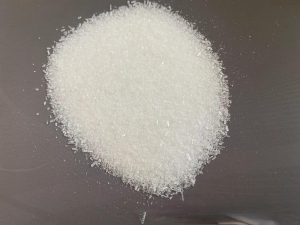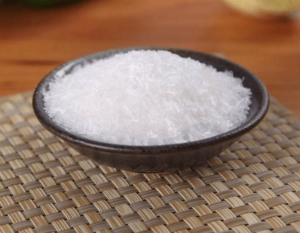
-
Cetearyl Alcohol(5:5) CAS NO.67762-27-0
Product details: Cetearyl Alcohol(5:5) CAS NO. 67762-27-0 Payment:T/T Min order:1000kg Lead time:7-15 daysTags : Wholesale Cetearyl Alcohol(5:5) high quality Cetearyl Alcohol(5:5) Cetearyl Alcohol(5:5) CAS NO.67762-27-0 Cetearyl Alcohol(5:5) CAS NO.67762-27-0 Cetearyl Alcohol(5:5)raw material
-
2-Hydroxy Ethyl Methacrylate CAS: 868-77-9
Hydroxyethyl methacrylate (HEMA) is a non-toxic, harmless, and widely used reagent, commonly used for soft lens materials, lens materials, or as a monomer for preparing dense ceramics and glass. Polyhydroxyethyl methacrylate (PHEMA) is a promising biopolymer with significant inertness, biocompatibility, and insolubility. Method 1: Place 100 ml of toluene, 62.1 (1 mol) parts of ethylene glycol, and enzymes (Novozym 435, 0.04 parts, 0.01 parts of sodium carbonate, and 0.01 parts of hydroquinone manufactured by Novo) into a 1-liter glass flask connected to a cooling tube receiver (for measuring moisture) and a reflux side tube, and heat to 40 ° C. 72.1 parts (1mol) of acrylic acid were added in batches within 10 minutes, while stirring step by step. After completing the total addition, the mixture was stirred at the same temperature under reduced pressure of 10mPa. After the reaction, the target acrylate was obtained by filtering and separating the catalyst and additives. The time required for the reaction is approximately 6 hours. The yield and composition of the obtained acrylate were determined by gas chromatography (hereinafter abbreviated as GC). [0044] [Example 2] [0045] Except for changing 72.1 parts (1 mol) of acrylic acid to 86.1 parts (1 mol) of methacrylic acid in Example 1, the target compound was obtained in a similar manner to Example 1. The time required for the reaction is approximately 5 hours. The yield of hydroxyethyl methacrylate (HEMA) was 98.5% by gas chromatography. The synthesis is continuous as shown in Figure 1. Method 2: Add 31.05g ethylene glycol (EG, 0.5mol), 47.35g (0.55mol) methacrylic acid, 40g (inside, 22g water in the catalyst before use, 18g dry weight) strong acid ion exchange resin (Amberlite IR124: gel type, 12% cross-linking degree, no pore), 0.086g HO-TEMPO, 0.086g hydroquinone and 200g toluene into a 500ml glass flask equipped with Dean Stark device, cooling pipe, thermometer and air inlet pipe, Then heat and stir at 100 ℃, while using a pump to add water at a rate of 2g/h. The water formed in the reaction is azeotropic with toluene and removed through the Dean Stark device. After 5 hours, the conversion rate of hydroxyethyl methacrylate was 87.3%. The synthesis is continuous as shown in Figure 1. purpose Hydroxyethyl methacrylate is mainly used for modifying resins and coatings. Copolymerization with other acrylic monomers can produce acrylic resins with active hydroxyl groups in the side chains, which can undergo esterification and crosslinking reactions, synthesize insoluble resins, improve adhesion, and can be used as fiber treatment agents. It reacts with melamine formaldehyde (or urea formaldehyde) resin, epoxy resin, etc. to manufacture two component coatings. Adding it to high-end car paint can maintain the mirror gloss for a long time. It can also be used as an adhesive for synthetic textiles and as a medical polymer monomerTags : 2-Hydroxy Ethyl Methacrylate CAS: 868-77-9 C6H10O3 HEMA
-
2-hydroxy ethyl methacrylate CAS: 868-77-9
Hydroxyethyl methacrylate (HEMA) is a non-toxic, harmless, and widely used reagent, commonly used for soft lens materials, lens materials, or as a monomer for preparing dense ceramics and glass. Polyhydroxyethyl methacrylate (PHEMA) is a promising biopolymer with significant inertness, biocompatibility, and insolubility. Method 1: Place 100 ml of toluene, 62.1 (1 mol) parts of ethylene glycol, and enzymes (Novozym 435, 0.04 parts, 0.01 parts of sodium carbonate, and 0.01 parts of hydroquinone manufactured by Novo) into a 1-liter glass flask connected to a cooling tube receiver (for measuring moisture) and a reflux side tube, and heat to 40 ° C. 72.1 parts (1mol) of acrylic acid were added in batches within 10 minutes, while stirring step by step. After completing the total addition, the mixture was stirred at the same temperature under reduced pressure of 10mPa. After the reaction, the target acrylate was obtained by filtering and separating the catalyst and additives. The time required for the reaction is approximately 6 hours. The yield and composition of the obtained acrylate were determined by gas chromatography (hereinafter abbreviated as GC). [0044] [Example 2] [0045] Except for changing 72.1 parts (1 mol) of acrylic acid to 86.1 parts (1 mol) of methacrylic acid in Example 1, the target compound was obtained in a similar manner to Example 1. The time required for the reaction is approximately 5 hours. The yield of hydroxyethyl methacrylate (HEMA) was 98.5% by gas chromatography. The synthesis is continuous as shown in Figure 1. Method 2: Add 31.05g ethylene glycol (EG, 0.5mol), 47.35g (0.55mol) methacrylic acid, 40g (inside, 22g water in the catalyst before use, 18g dry weight) strong acid ion exchange resin (Amberlite IR124: gel type, 12% cross-linking degree, no pore), 0.086g HO-TEMPO, 0.086g hydroquinone and 200g toluene into a 500ml glass flask equipped with Dean Stark device, cooling pipe, thermometer and air inlet pipe, Then heat and stir at 100 ℃, while using a pump to add water at a rate of 2g/h. The water formed in the reaction is azeotropic with toluene and removed through the Dean Stark device. After 5 hours, the conversion rate of hydroxyethyl methacrylate was 87.3%. The synthesis is continuous as shown in Figure 1. purpose Hydroxyethyl methacrylate is mainly used for modifying resins and coatings. Copolymerization with other acrylic monomers can produce acrylic resins with active hydroxyl groups in the side chains, which can undergo esterification and crosslinking reactions, synthesize insoluble resins, improve adhesion, and can be used as fiber treatment agents. It reacts with melamine formaldehyde (or urea formaldehyde) resin, epoxy resin, etc. to manufacture two component coatings. Adding it to high-end car paint can maintain the mirror gloss for a long time. It can also be used as an adhesive for synthetic textiles and as a medical polymer monomer -
3,3,3-Trifluoropropene CAS NO.677-21-4 as Silicone origin from China.
Name: 3,3,3-Trifluoropropene CAS No.: 677-21-4 Molecular formula: CF3CH=CH2 Molecular weight: 96 Physical property constant: b. p. -22 ℃ Appearance: colorless gas Purity: ≥99.8% Moisture content: ≤100ppm Acidity (calculated as HCl): ≤2ppm High boiling point substance: <0.02% Evaporation residue: <0.01%Tags : 3,3,3-Trifluoropropene CAS NO.677-21-4 Trifluoropropene CAS NO.677-21-4 3,3,3-Trifluoropropene CAS 677-21-4 3,3,3-trifluoropropylene CAS NO.677-21-4 C3H3F3 3,3,3-Trifluoroprop-1-ene CAS NO.677-21-4
-
Trimethylchlorosilane (TMCS) CAS :75-77-4
Name: Chlorotrimethylsilane CAS number: 75-77-4 Molecular formula: C3H9ClSi Molecular weight: 108.64 EINECS number: 200-900-5 Mol file: 75-77-4.molTags : Trimethylchlorosilane CAS :75-77-4 TMCS Trimethylchlorosilane from factory Cost price Trimethylchlorosilane High purity Trimethylchlorosilane
-
Tetramethyldisiloxane (TMDSO) CAS :3277-26-7
Name: 1,1,3,3-Tetramethyldisiloxane CAS number: 3277-26-7 Molecular formula: C4H14OSi2 Molecular weight: 134.32 EINECS number: 221-906-4 Mol file: 3277-26-7.molTags : TMDSO Tetramethyldisiloxane CAS :3277-26-7 factory price Tetramethyldisiloxane raw material Tetramethyldisiloxane High quality Tetramethyldisiloxane
-
Triethyl citrate
Name: Triethyl citrate CAS No.: 77-93-0 Appearance: Colorless Transparent Liquid Molecular formula: C12H20O7 Molecular Weight: 276.2830 Melting point:-46 °C STARDANDS:BP2021/USP40 PACKAGE:20KG/DRUMTags : Triethyl citrate 77-93-0 CITRIC ACID TRIETHYL ESTER C12H20O7
-
Cilnidipine
Name: Cilnidipine CAS No.: 132203-70-4 Appearance: light yellow powder Molecular formula: ight yellow Molecular Weight: 492.52 Melting point:97-99°C PACKAGE:5KG/TINTags : CAS:132203-70-4 Cilnidipine intermediates C27H28N2O7 CBNumber: 2193117 4-dihydropyridine-3 4-dihydro-2
-
MONOPOTASSIUM PHOSPHATE(MPP) CAS:13977-65-6
Name:MONOPOTASSIUM PHOSPHATE(MPP) CAS No.:13977-65-6 Appearance: White crystals Molecular formula: KH2PO3 Molecular Weight: 120.086 PACKAGE:25KG/BAGTags : Potassium dihydrogen phosphate MPP CAS NO:13977-65-6 KH2PO3 potassium salt Phosphorous acid dihydrogen
-
Monoammonium Phosphate(MAP) NH4H2PO4
Name: Monoammonium Phosphate(MAP) CAS No.: 7722-76-1 Appearance: White crystals powder Molecular formula: NH4H2PO4 Molecular Weight: 115.026 Melting point:190 °C(lit.) PACKAGE:25KG/BAGTags : MAP Monoammonium Phosphate NH4H2PO4 CAS NO:7722-76-1 Ammonium dihydrogen phosphate MAP monoammonium phosphate
-
Mono potassium Phosphate(MKP) KH2PO4
Name: Mono potassium Phosphate(MKP) CAS No.: 7778-77-0 Appearance: White crystal powder Molecular formula: KH2PO4 Molecular Weight: 136.086 Melting point:252.6 ℃lit.) PACKAGE:25KG/BAGTags : Mono potassium Phosphate(MKP) KH2PO4 CAS NO:7778-77-0 Factory price Mono potassium Phosphate(MKP) High Quality Mono potassium Phosphate(MKP)
-
Di-ammonium phosphate (DAP)(NH4)2HPO4
Name: Di-ammonium phosphate (DAP)(NH4)2HPO4 CAS No.: 7783-28-0 Appearance: Monoclinic crystal Molecular formula: (NH4)2HPO4 Molecular Weight: 132.056 Melting point:155 ℃ °C(lit.) PACKAGE:25KG/BAGTags : 7783-28-0 (NH4)2HPO4 Di-ammonium phosphate (DAP) Ammonium phosphate Dibasic Secondary ammonium Diammonium hydrogen phosphates
 call us :
call us :  send a message :
send a message : 





























 online service
online service +8613866722531
+8613866722531

 +8613866722531
+8613866722531